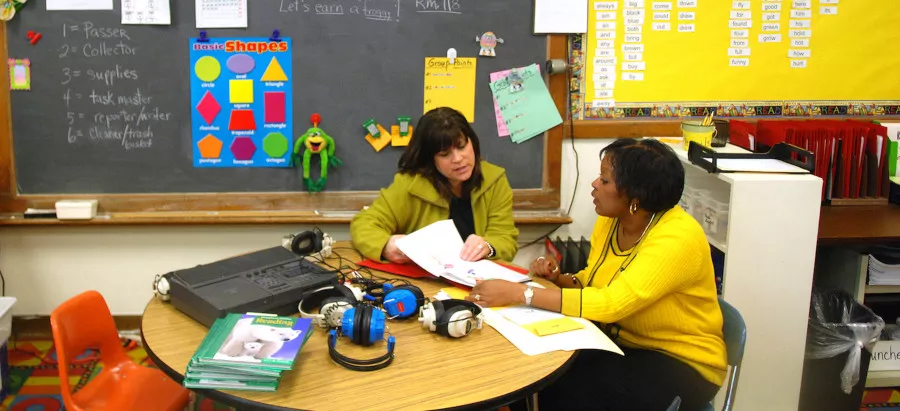 While the majority of teachers believe that their school leadership regards professional learning as a top priority for all staff, they nonetheless feel excluded from decisions and don't believe enough opportunities for effective professional development exist. These are some of the findings from a new nationwide survey of 6,300 educators, conducted jointly by Corwin, Learning Forward and the National Education Association (NEA), that delved into their attitudes about professional development opportunities in their schools and district.
While the majority of teachers believe that their school leadership regards professional learning as a top priority for all staff, they nonetheless feel excluded from decisions and don't believe enough opportunities for effective professional development exist. These are some of the findings from a new nationwide survey of 6,300 educators, conducted jointly by Corwin, Learning Forward and the National Education Association (NEA), that delved into their attitudes about professional development opportunities in their schools and district.
“Professional development is a fundamental part of any job, and the education profession is no exception,” said NEA President Lily Eskelsen García. “Quality and relevant professional learning provides educators with ongoing opportunities to keep up with the rapid pace of classroom advancements and ensure they have the appropriate skills to reach and teach diverse student populations."
Effective and embedded professional development is one of the pillars of success of high-performing systems around the world, such as Finland, Shangai, and Singapore. Professional development and support is freely available throughout a teacher’s career, and time is set aside during the work day for collaborative planning, action research, and peer coaching. According to the Organization for Economic Cooperation and Development (OECD), U.S. teachers spend more time in the classroom than their counterparts in almost every other nation, so little time is set aside for PD, collaboration, etc. Teacher autonomy also declined over the past decade or so, according to survey data compiled by the National Center for Education Statistics.
 Standards for Professional Learning (Click to Enlarge)
Standards for Professional Learning (Click to Enlarge)
These and other factors help keep the teacher attrition rate of top-rate systems at around 3%, significantly below the 8% rate that hobbles the profession and student achievement in the United States.
The NEA/Corwin/Learning Forward survey pinpoints several weaknesses in how U.S. schools approach PD. Here are three main findings:
- Nearly 20 percent of teachers indicate that they have no input in their professional development, while just over half report that that they have "some say" in these decisions. Overwhelmingly, teachers (75 percent) identify their school and district leaders as the primary professional learning decision-makers. Only four percent of teachers say that teachers primarily made decisions regarding professional learning.
- Nearly half of teachers report that a majority of their professional learning experiences occur on in-service days or in the summer despite expressing a strong preference for face-to-face learning during the work day. Nearly 25 percent of teachers report spending less than one hour each week on professional learning.
- Teachers report that their schools tend to use student achievement data to plan professional learning, but do not use a variety of data to assess its effectiveness or determine how they will assess the effectiveness of professional learning before the plan is implemented.
The report recommends that schools embed continual professional development throughout the school year, citing instructional coaching and professional learning communities as proven and effective models. Because the majority of educators surveyed believe their school leaders consider them capable of leadership roles, the report urges administrators to build on this trust and provide teachers with "more voice and choice" in professional development.
“Evidence from all corners tells us that the job-embedded professional learning that educators value is the professional learning that makes a difference for students,” said Stephanie Hirsh, executive director of Learning Forward. “Let’s use this chorus of teacher voices as an opportunity to take action in transforming professional learning systems.”


